
Japan with the Chigyo Sisters, Part 1
The Background: It’s a complicated story as to how I ended up going by myself to Japan on a tour with the Chigyo sisters. I’ve known these talented women since 1984 or so. They were just starting out, as I was, in the textile world. I met them through my friends, Sheri Brautigam and Carol Watanabe. They are practitioners of a stitching technique called Sashiko and bring a cutting edge yet traditional flavor to their work.
A few of the draws to visit Japan were the Temple market in Kyoto, the almost Living National Treasure Indigo dyer, plus, can we just say–the food and hot springs!!
Kyoto: We were based in Kyoto in an old Ryokan (traditional inn) named Togetsu run by two sisters, Kuniko and Fukiko, and from there traveled to different islands.
There 6 other tour-ees were: Helen Garrison from New York, a vibrant 80-something year old, Micki Lippe, based in Seattle, a jeweler, her husband, a brain researcher, and son Eric, a free style photographer plus New York graphic designer, Lorraine Ferguson and her daughter Zoe, a tech wonder. It was a perfect size for this type of group, worldly, intimate and cultural.
The first full day there we visited sister Toshie’s house where we took a workshop from a master calligrapher named Ryunosake Uno, assisted by a neighbor, Isogawa. It was a delight to be taught by this elegant man, and to practice the gliding with ink and brush in ways we don’t usually do. The day was full of camaraderie and delicious food Toshie and her husband, Muni, made. Their house was hand crafted with timber from the Olympic Peninsula that aged for 20 years and used no nails.It was wonderful to be outside in the country to see the straight, tall cedar trees and landscape of this place.

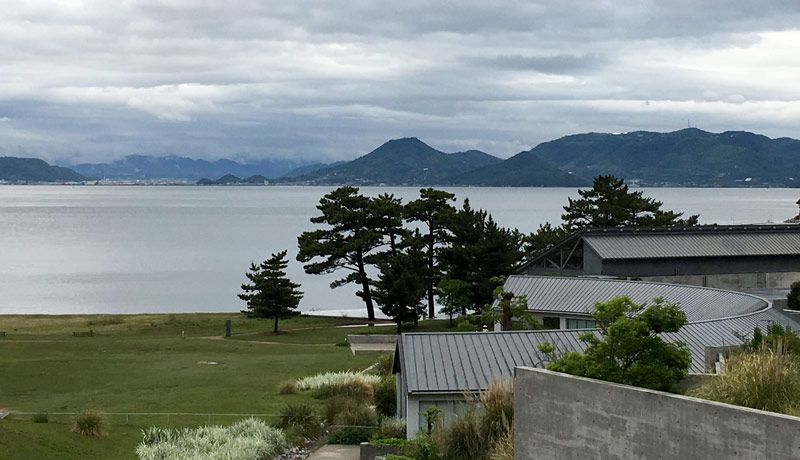
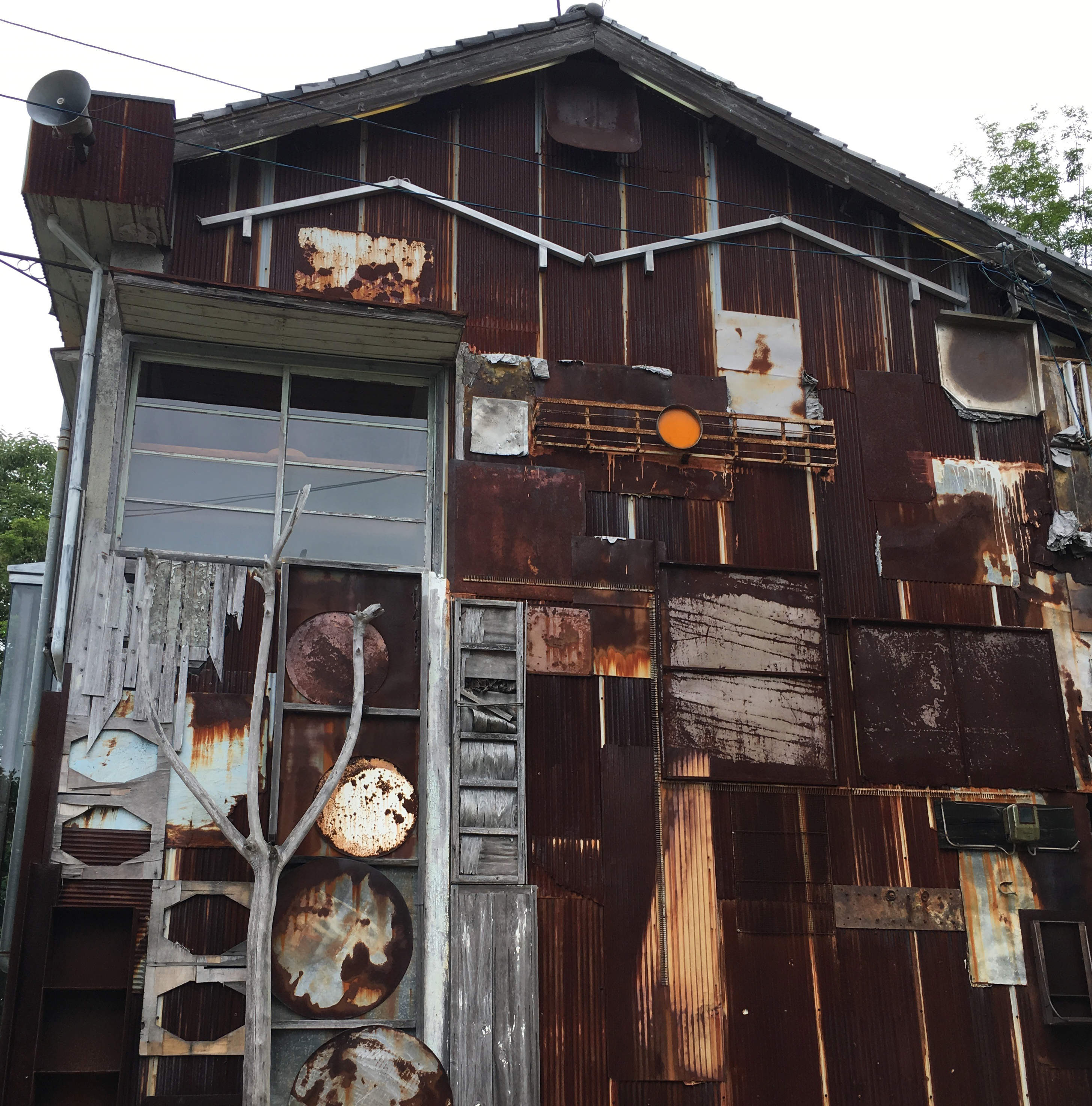
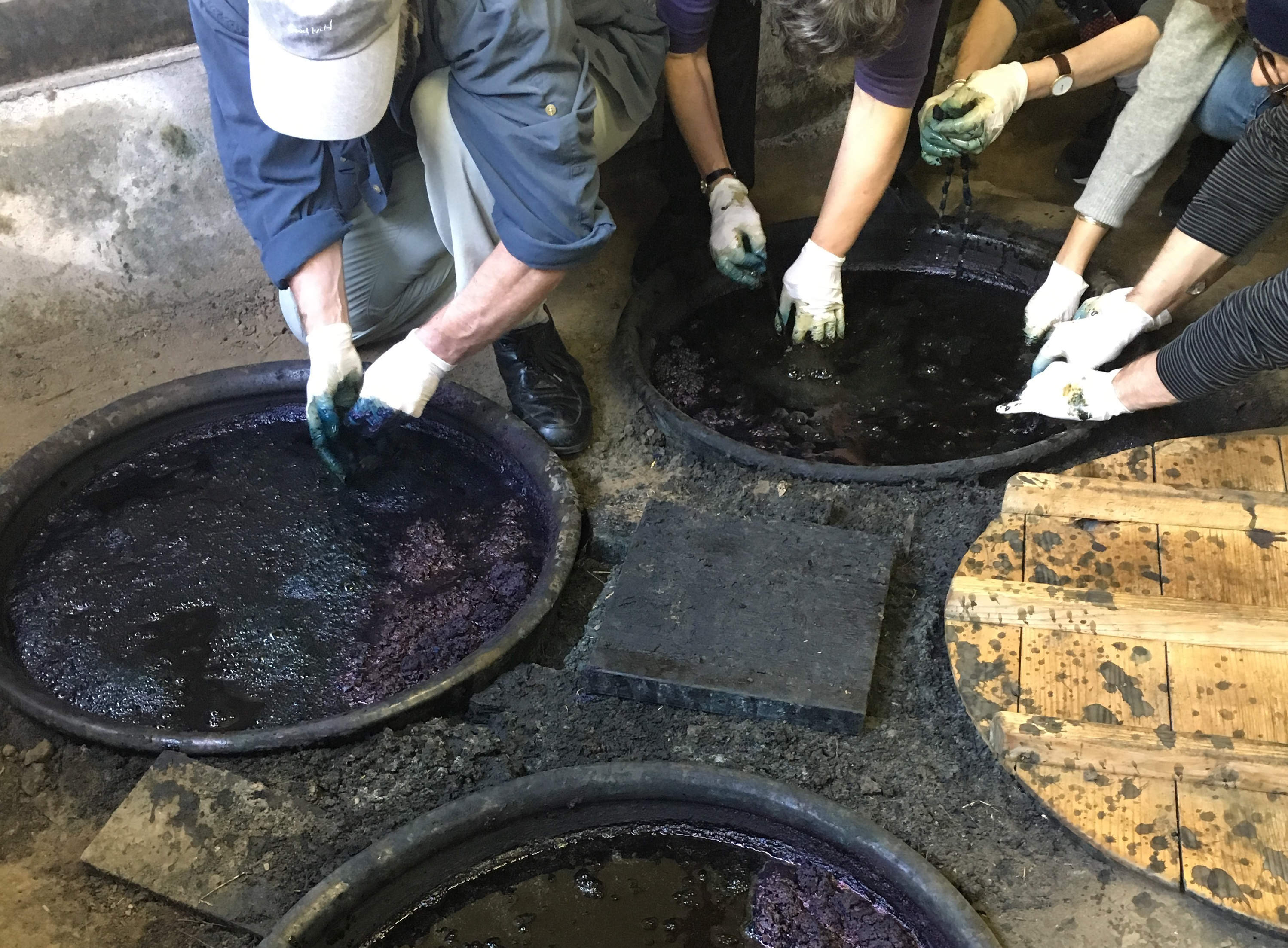
Naoshima
The next day we took the Bullet train (Shinkansen) to the island of Naoshima. Naoshima is home to 3 world-class museums, one being set into the hill. The Chichu features only 5 works of art. One is the building itself, by Tadao Ando, a brutalist structure that plays with natural light and mysterious ways to view the open gardens. There are 3 James Turrell light displays that lend an otherworldly color glow to the grey cement walls. The third work is by Walter de Maria and features enormous granite balls the size of rooms, perched on a wide stairway. There are gold columns on the walls and they look like large trophies on display.
My favorite piece was the Monet room. Taking off your shoes to don silent slippers, you enter the light filled room on small marble tiles. On each wall is a Giverny painting alone and majestic. The light is soft, yet bright and allows you, when up close, to see the strokes of the master, his under-painting so modern, the colors of the work so rich. It is meditative and works as sensory combination: the quiet of the space, the lusciousness of the paintings and the white yet soft quality of the light. They do not allow photography in the museum.
Kyushu: The nest day we explored the fishing village where there are “art” houses to experience, before we headed to Kyushu, taking a ferry, 2 bullet trains and 2 regular trains! The first night stayed we in an 18 generations old Samurai’s compound in Yanagawa. We had our first Kaiseki: meaning 13-18 course dinner!
Indigo
The following day we made the pilgrimage to the workshop in Karume of National Treasure Hiroshi Tanaka, (He passed away a week before we visited) his wife, Mamiko. His son, Toshiaki Tanaka, is carrying on the art of Kasuri, the process of tying threads to create a resist, dyeing them in indigo, then weaving them into traditional and modern designs.
We made shibori hankies, and dipped them into the embedded dye pots, and watched the son, who is working to become a master treasure himself, twist and aerate the yarns. We saw how to tie off the threads to create the patterns. I still marvel at this process, which I will never truly understand! We ate a nice lunch, we shopped some of their wonderful products, said our warm goodbyes and piled into the van and sped off to Yufuin.
Yufuin
This part of Kyushu is mountainous and full of thermal activity. We were headed to the Kamenoi Hot Springs, a luxe ryokan/onsen. We all had our own rooms with private tubs streaming with HOT water. There is an art to bathing in Japan, especially in an onsen. I live for bathing and this was sublime, after I figured out how not to scald myself!
On our way to the hot spring we stopped at an art opening organized by 3 brothers: one, a master basket maker, the second a calligrapher, and the third a photographer. A very arty scene, it was lovely to be in an environment with other local artists, showing masterful work. I fell in love with each of their work. The calligrapher’s was playful and I appreciated his mark making and composition. The baskets were formal yet modern, the shapes pleasingly iconic. The photos were of trance dancing in Nepal, rather dark subjects, so oddly out of place, yet fascinating.
Dinner that night was an immense meal. We were still learning the way to not overeat, everything a temptation of strange and wonderful tastes. Then, to soak and sleep on the floor!
Onta
The following day we visited Yashuhiro Takami, the basketmaker. He and his wife showed us how to prepare the splitting of bamboo and wrestling it into a shape. Some of his large work is quite abstract in a wabi sabi sort of way. He is a reticent man, but produces elegant work.

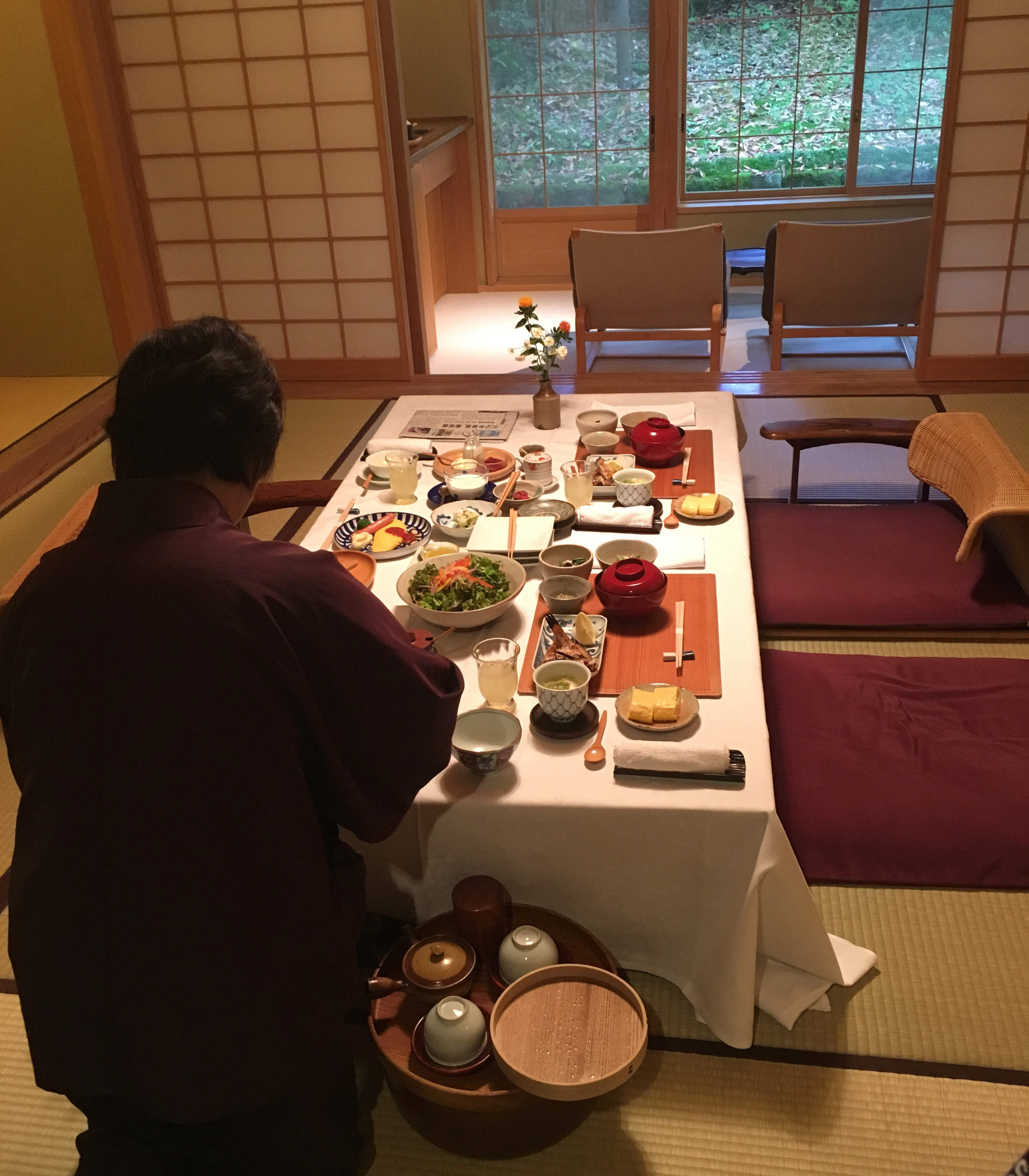
As was suggested by a friend and also the sisters, I had made some small thread pieces to offer as gifts for the artisans we visited. Plus chocolate! It was very satisfying to be able to give something back to each of them as a way to honor them for their generosity and mastery.
We had the afternoon off and visited the town of Yufuin where I had my only ramen soup of the trip, in a small shop run by a modern couple. I tooled around with Helen who, thank god, knew what the name of the ryokan was because we got terribly lost and without her knowing we would still be there today! That was our second time getting lost and her remembering where it was we were staying!
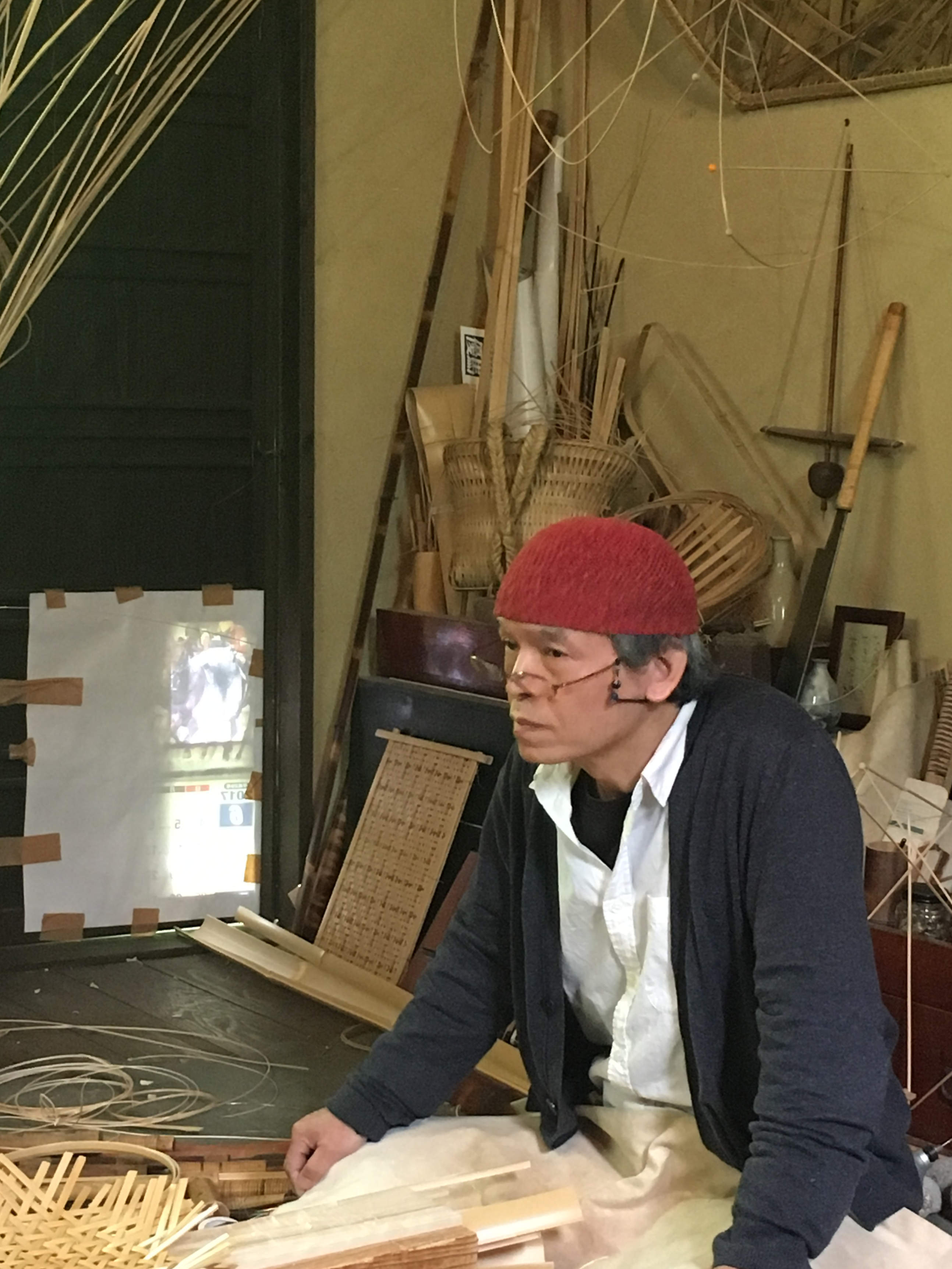
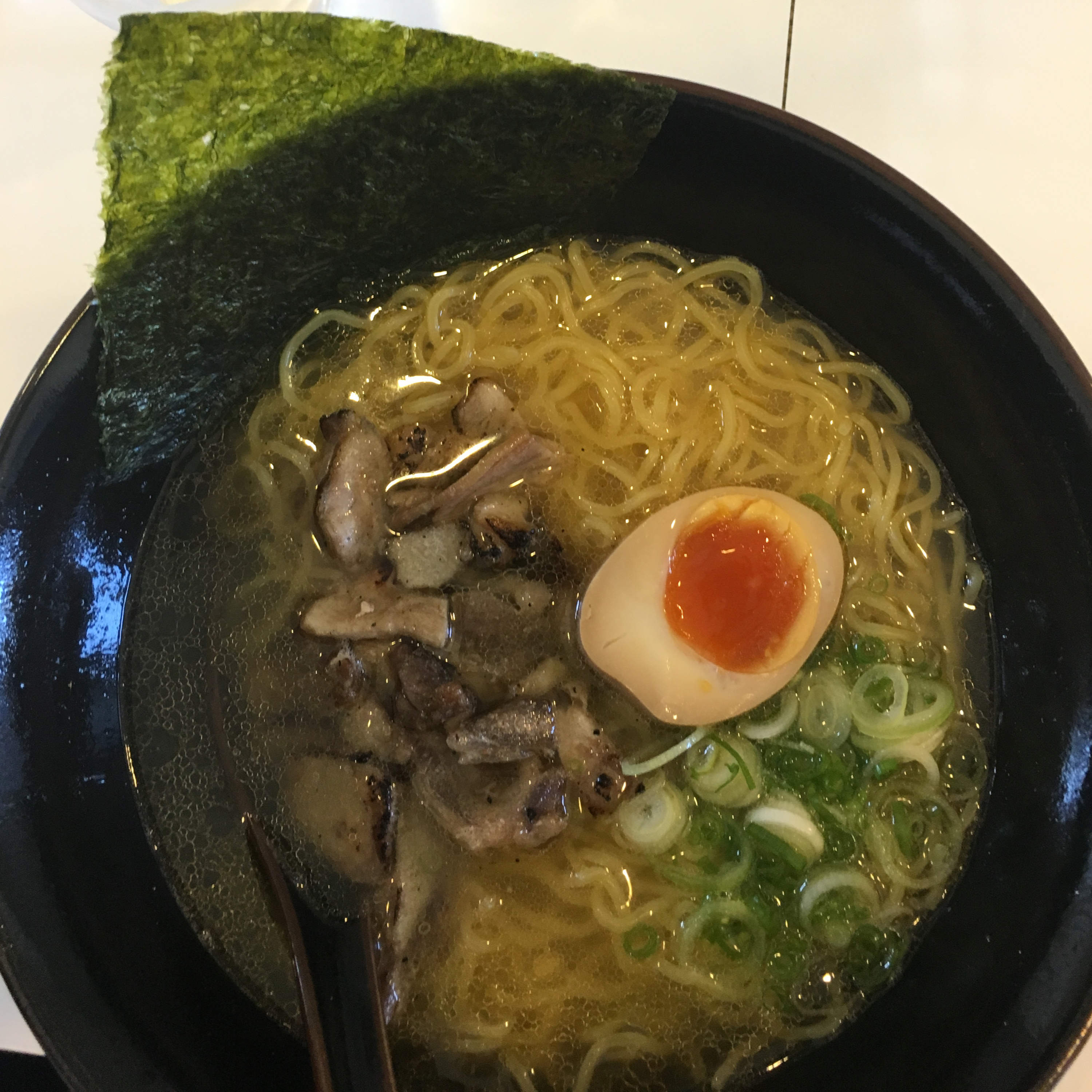
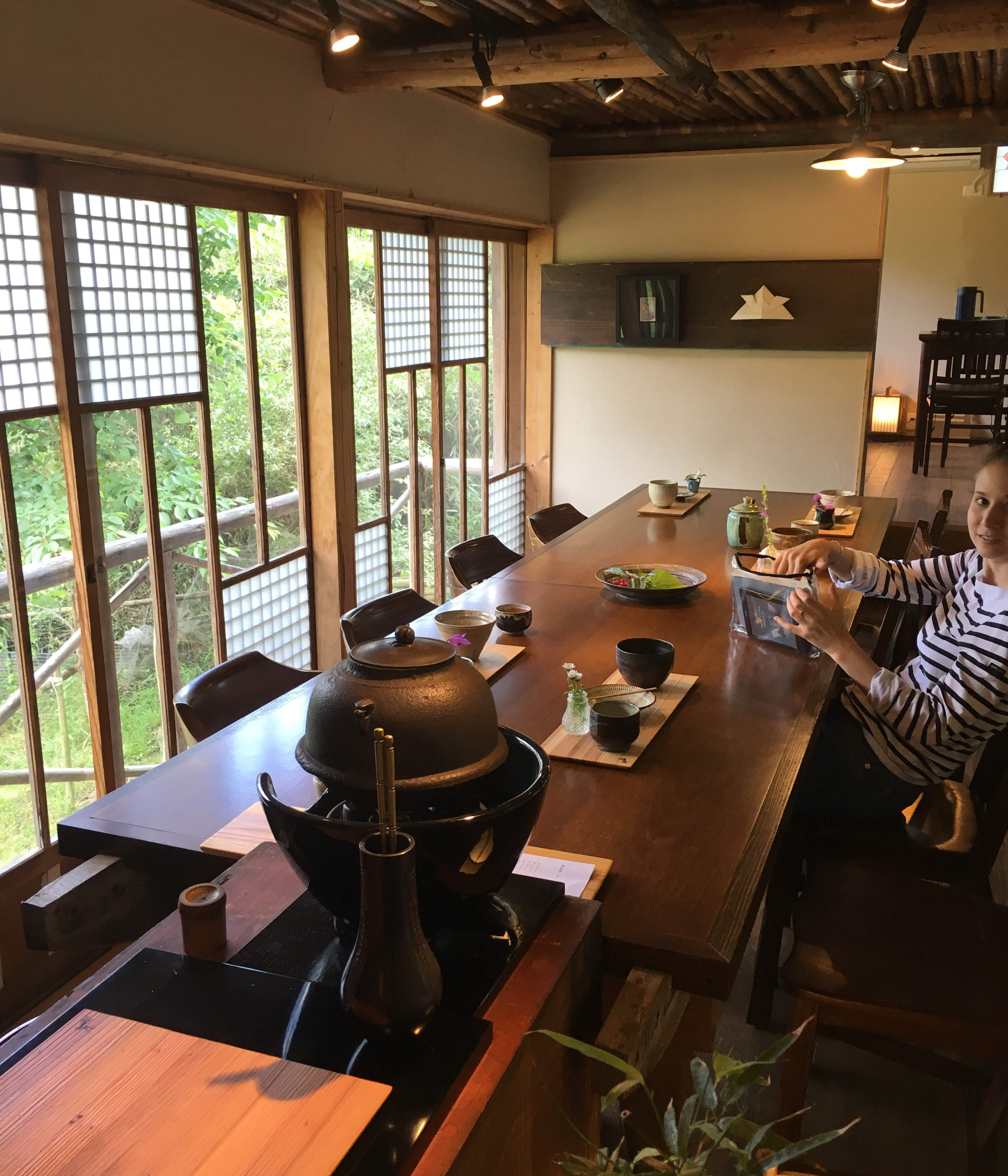
On our way back to Kyoto we stopped at a small village called Onta, where the entire town makes a certain style of etched pottery. The kilns look like old Roman structures and each family has a gift shop and production of slightly varying patterns. In order to pound the clay they use the river water to fill up weighted logs, so there is a distinctive pounding sound as you go around to each compound.
For lunch we stopped in the middle of nowhere to eat the best food in a café run by a modern couple. I don’t know how they are surviving. They presented the food in local Onta dishes, each offering more beautiful and delicate, vegetarian food grown right outside the window. They had a curated selection of the dishes for sale and I bought a few of the nesting small plates. It was easier to see them in a smaller quantity.
Headed back to Kyoto…


